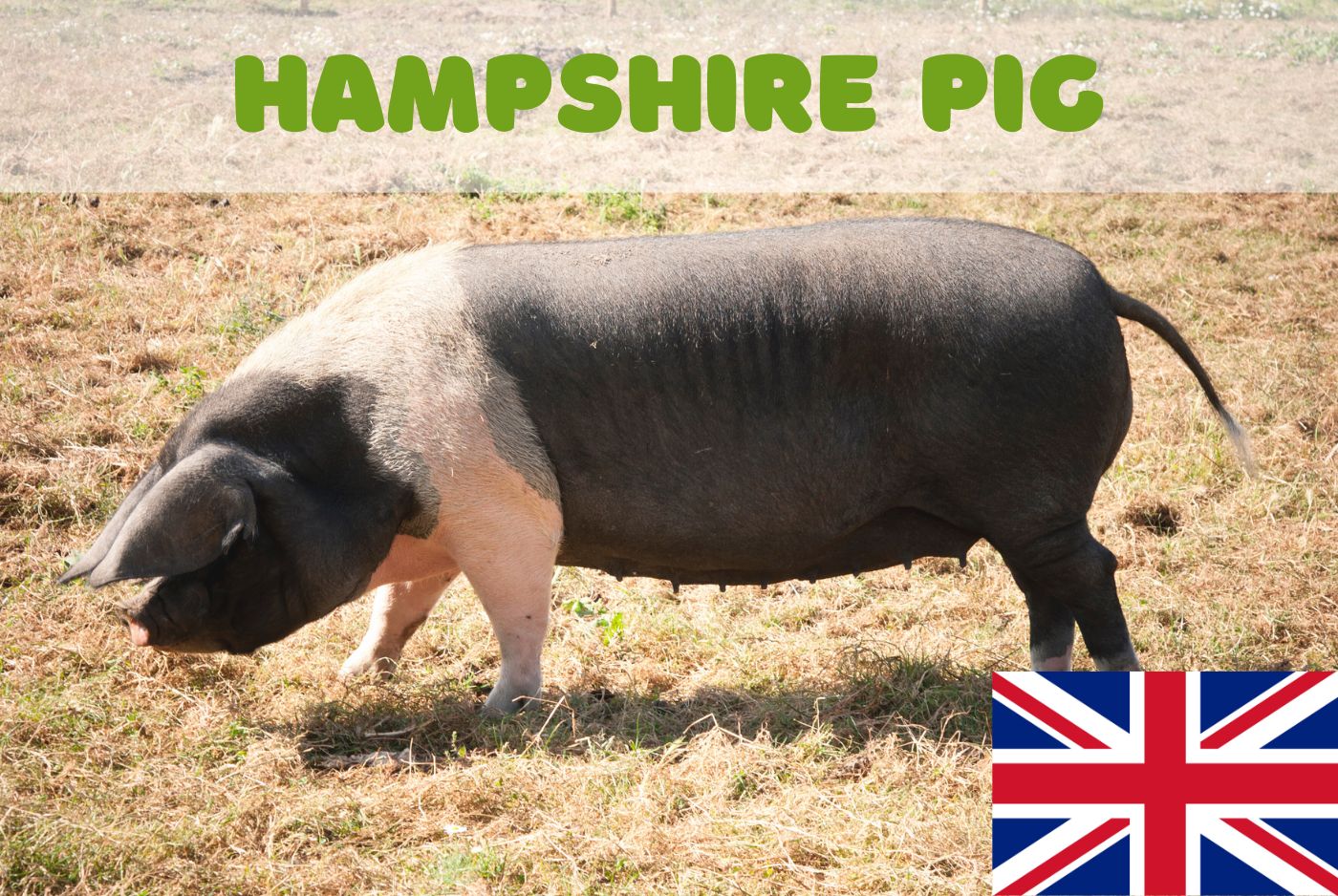
What is a Hampshire pig?
The Hampshire pig is a breed of domestic pig native to southern Scotland and northern England.
This pig is one of the oldest American pig breeds and the most recorded pig breed in the United States.
Throughout history, the Hampshire pig had other names such as McGee hog, Thin Rinds, Saddleback, Ring Middle, The Mark of a Meat Hog
Characteristics
Hampshire pig’s physical characteristics are quite similar to those of the Wessex Saddleback, which often leads people to confuse them.
Let’s take a closer look at the physical characteristics to see how you can recognize them and differentiate them from the similar Wessex Saddleback.
Physical Characteristics
Color
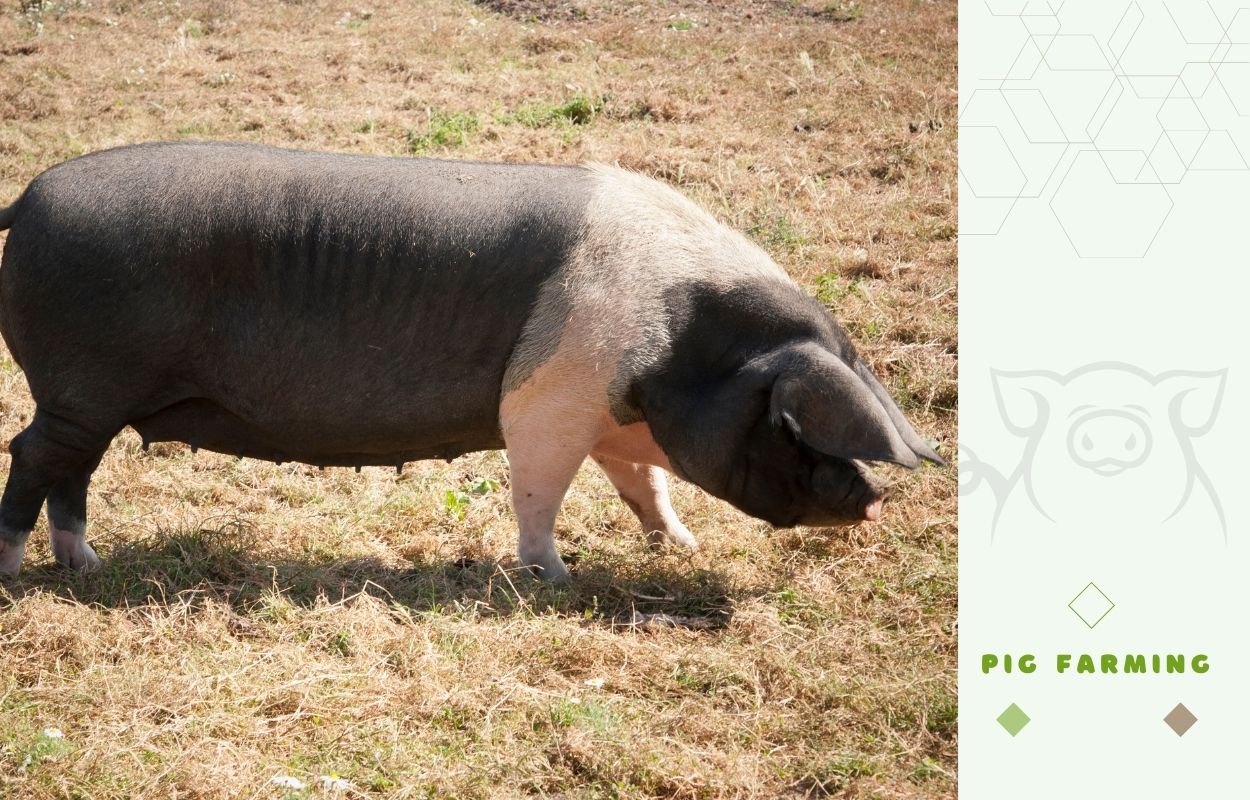
The Hampshire pig’s color is black, with white front legs and a white band that goes around its body.
The white band on their body is one of the key features of the color pattern. The rest of their body, including the head, tail, back, belly, and rear end, is black.
Head, Face, and Eyes
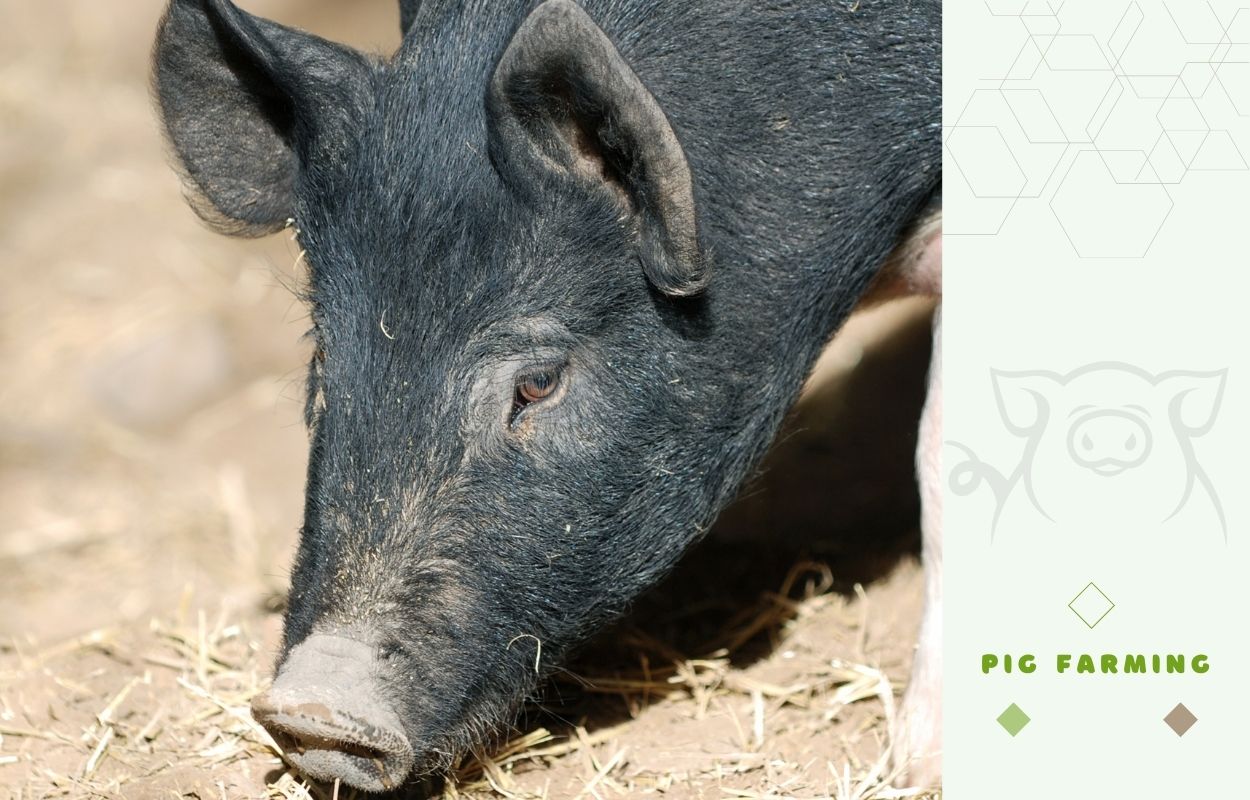
A Hampshire pig’s head is medium in size compared to its entire body.
The face is also small with a broad forehead. The face of the boar differs in features from that of the sow. The face of the sow has prominent feminine features, while the boar has masculine features.
The Hampshire’s eyes are small and set well apart. These small eyes only give them limited vision.
Teeth
Hampshire pig teeth are not very sharp, but they can deliver a strong bite thanks to their robust jaws. The teeth of this pig can also be trimmed during the piglet stage.
Ears
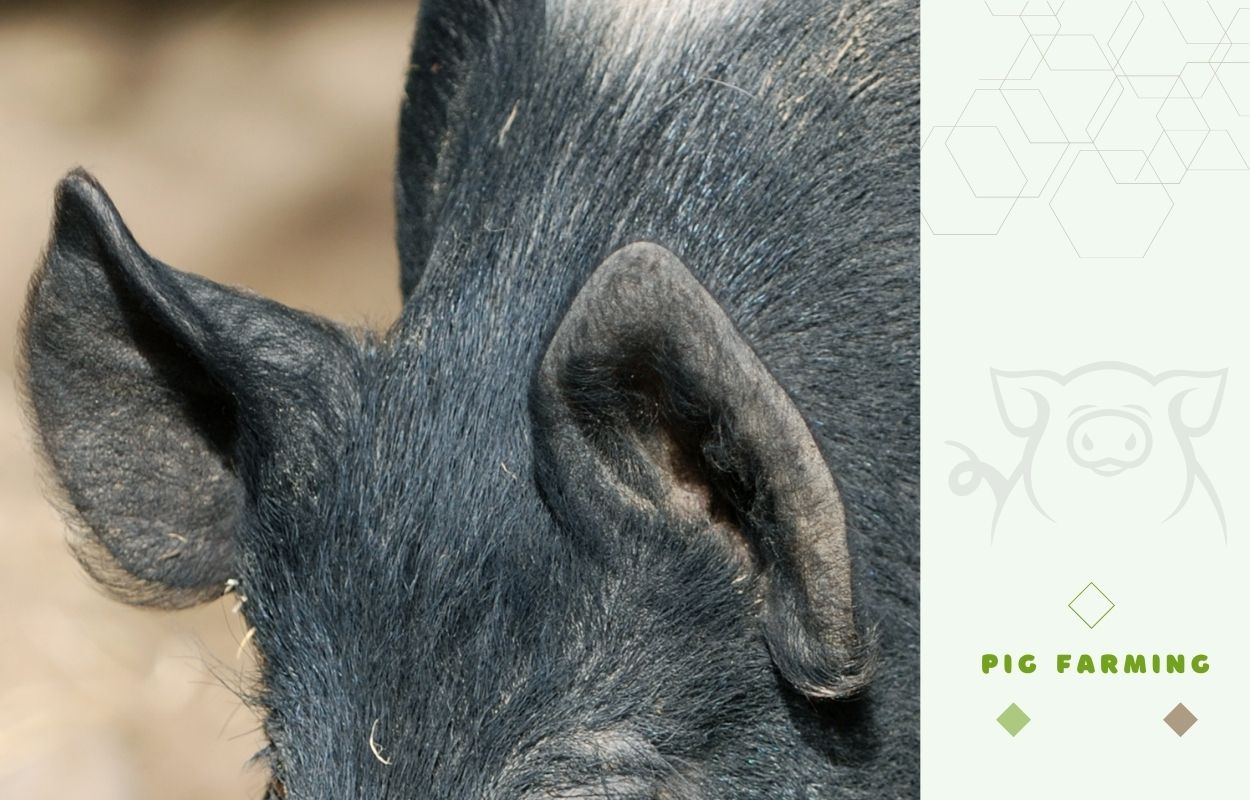
Although Hampshire pigs may have a resemblance to Wessex Saddlebacks, one clear difference you can spot is their upright and reasonably sized ears.
Neck and Shoulders
The shoulders are robust and smooth, with no pronounced apex at the top. The neck is muscular and long.
Legs
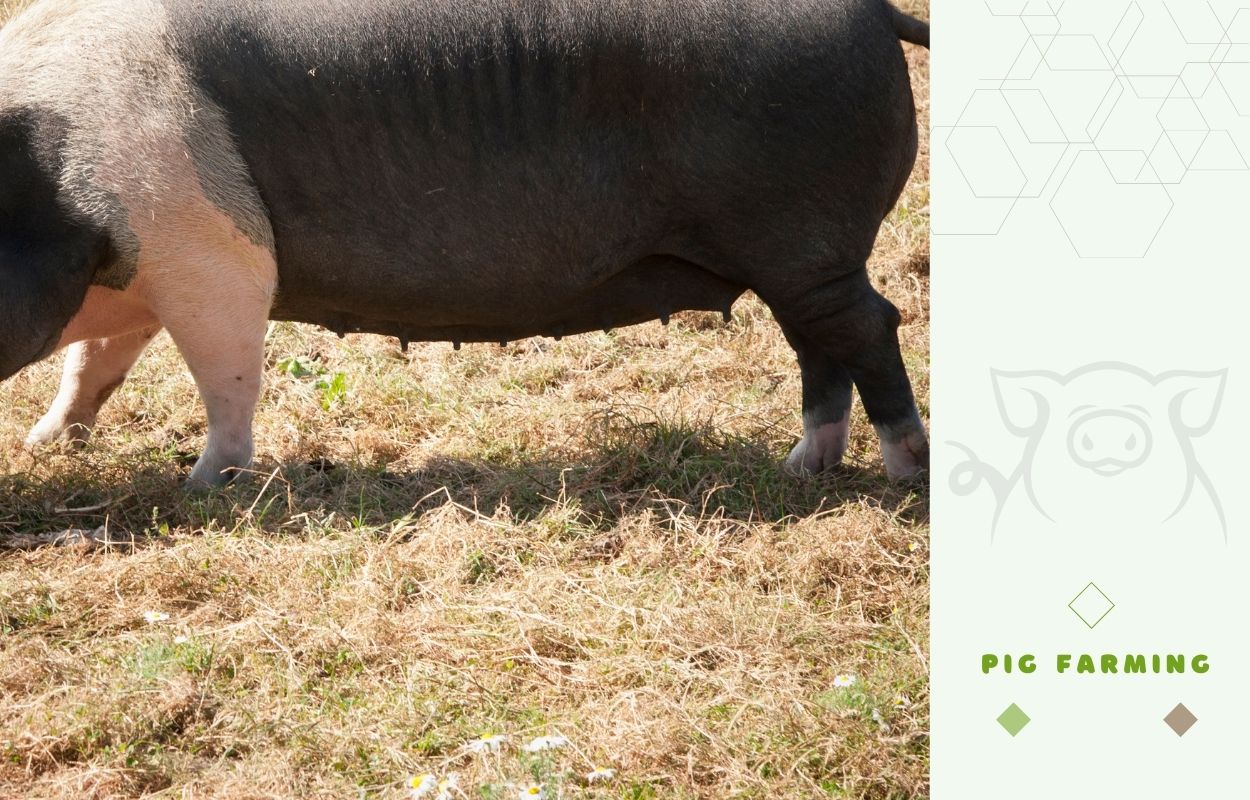
Hampshire’s legs are characterized by their strong and flat bones of medium length. Their legs are straight, well-spaced, and positioned at all four corners, providing stability. They have sturdy feet with short, equally sized-claws.
Back and Belly
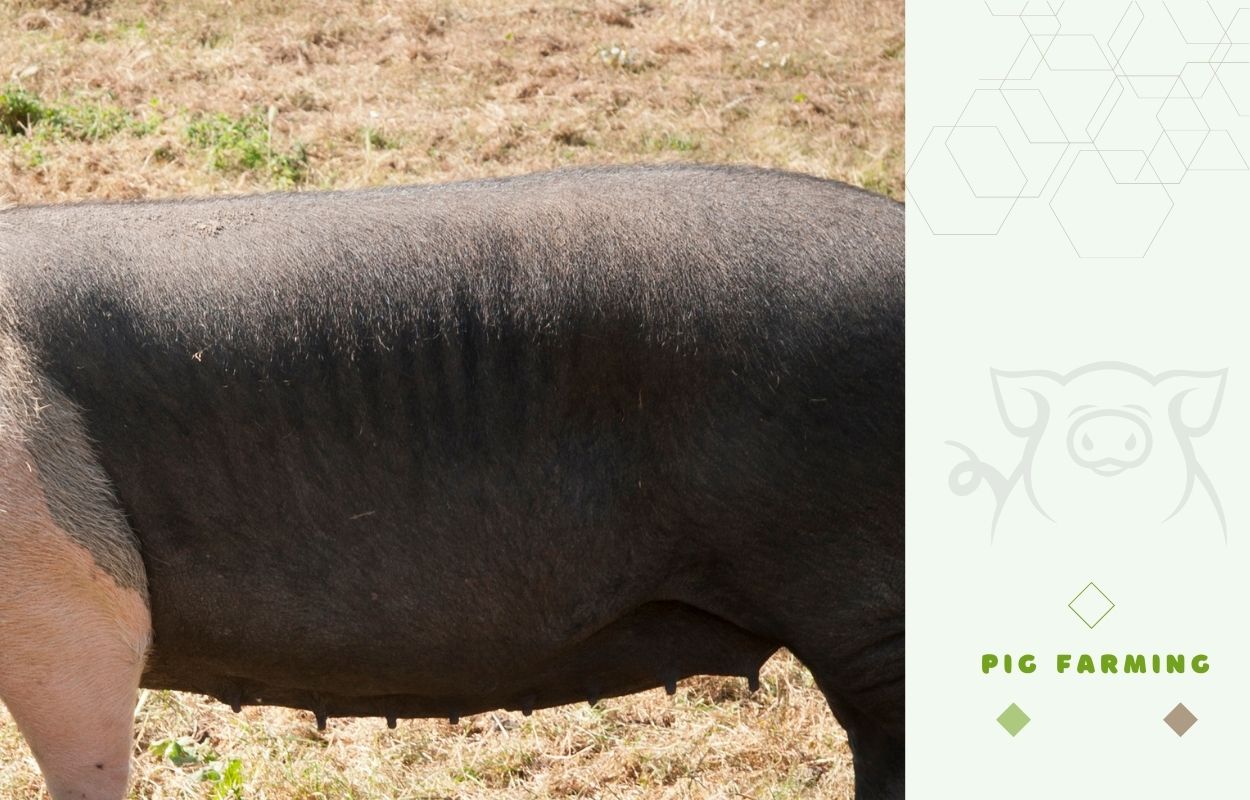
The Hampshire pig has a lengthy, lean back with a semi-level top line and a well-defined, smooth, and elongated muscle structure.
The belly of the pig is flat. It maintains a moderately curved appearance, contributing to the overall muscular and well-proportioned physique of the pig.
Teats
Hampshire pig has a minimum of 12 evenly spaced and noticeable teats, with at least six on each side and a requirement of three in front of the sheath for boars.
Tail
The tail of a Hampshire pig is short and positioned very high on its hindquarters. It also curves around, making contact with its lower back.
Hampshire pig’s size
A Hampshire pig has a large size.
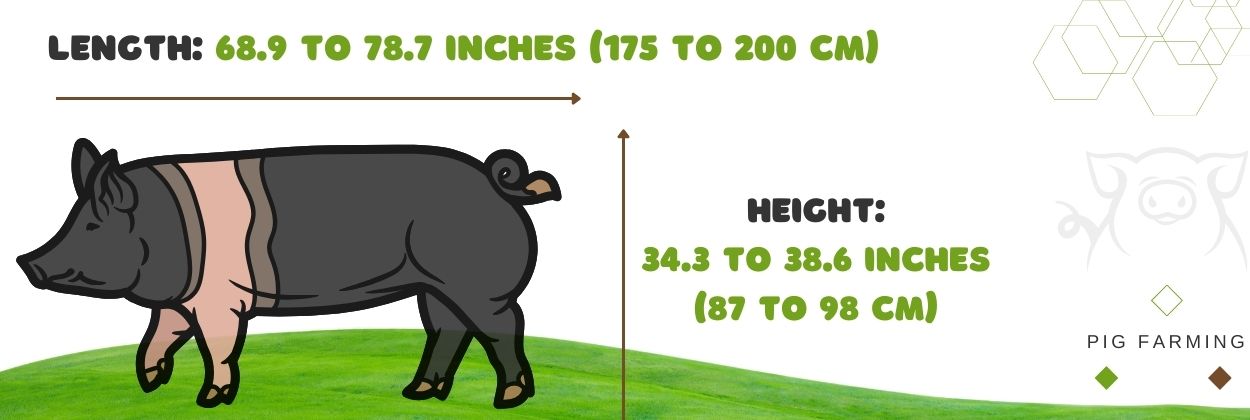
An adult Hampshire pig has a length of 68.9 to 78.7 inches (175 to 200 cm) from snout to tail and a height of 34.3 to 38.6 inches (87 to 98 cm).
Hampshire females are smaller than boars.
Just keep in mind that these measurements are averages. The size of the pig can vary depending on factors such as age, diet, and genetics.
Lifespan
A Hampshire pig can live up to 12 years.
This pig lives longer than a Berkshire pig but less than any heritage pig like Mangalica or Red Wattle pig.
Growth Rate
The growth rate of Hampshire pigs is very fast compared to other breeds, making them an ideal choice for those seeking a high meat yield in a short amount of time.
How fast do Hampshire pigs grow?
A Hampshire pig reaches a good weight in 5 months.
Its growth rate is faster than that of the Large White pig and any other pasture pig, such as the Idaho pig.
The rapid growth rate of Hampshire pigs has always been a challenge for farmers accustomed to pigs with slower growth rates.
Regarding sexual maturity, Hampshire pigs reach it at 7 months.
Weight
A 7-week-old Hampshire piglet weighs 55 lbs (25 kg).
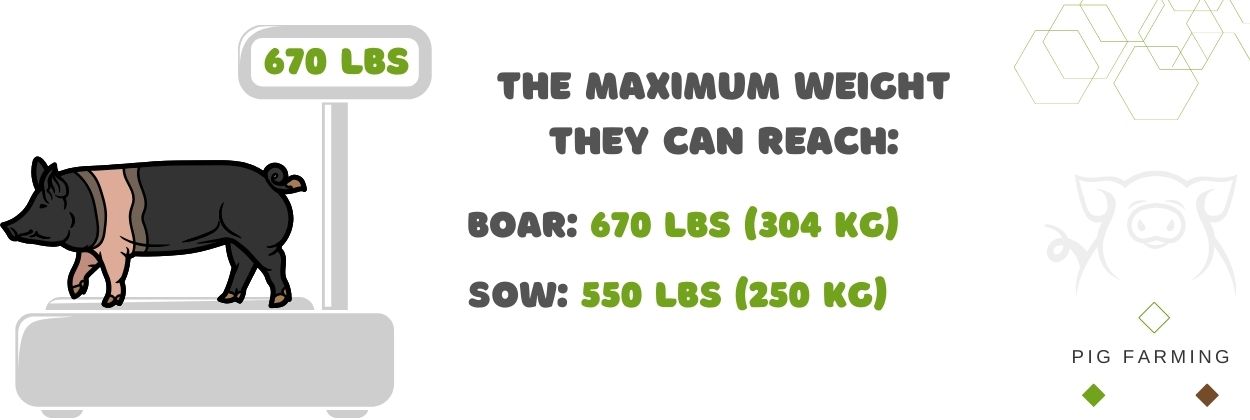
An adult Hampshire boar can reach a maximum weight of 670 lbs (304 kg), while an adult Hampshire sow can weigh up to 550 lbs (250 kg), making them smaller than the boars.
During their growth period, both female and male Hampshire piglets have the same daily growth rate of 6.6 oz (187g).
Slaughtered Time
Hampshire pigs can be slaughtered at 5 to 6 months when they already weigh 270 lbs (120 kg).
Some farmers prefer to wait longer and let them reach 300 lbs (135 kg) or more, while others choose not to pursue greater weight.
A Hampshire pig weighing 250 lbs (115 kg) can yield approximately 200 lbs (90 kg) of meat, which is around 75% of its live weight.
Temperament and Behaviour
Hampshire pigs have a calm and docile temperament most of the time. Despite their large size, they tend to be easier to handle than other large pig breeds.
These pigs do not usually show aggressive behavior unless they feel threatened or provoked to do so. The only aggressive behavior comes from adult boars during mating.
Apart from that, they are friendly with humans and other animals. They are also sociable creatures and thrive in a social environment. They can become stressed or exhibit behavioral issues when isolated for extended periods.
Tip: If you raise a single Hampshire pig on your homestead, try to spend more time with it, talk to it, and walk with it to make it feel socially engaged.
They are active and have a high level of energy, which drives them to explore every inch of their designated area. They enjoy exploring their surroundings and rooting in the soil, so you should provide them with enough space to get their daily dose of exercise.
Hampshire pigs, like other pasture pigs, have a strong foraging instinct. They use this instinct to keep themselves entertained and happy while also searching for food with their snouts.
Hampshire Pig Meat
The meat of the Hampshire pig is known for its leanness.
Its meat is more similar to Yorkshire pork, which is extremely lean, and not at all like other well-marbled meats such as Berkshire or Duroc.
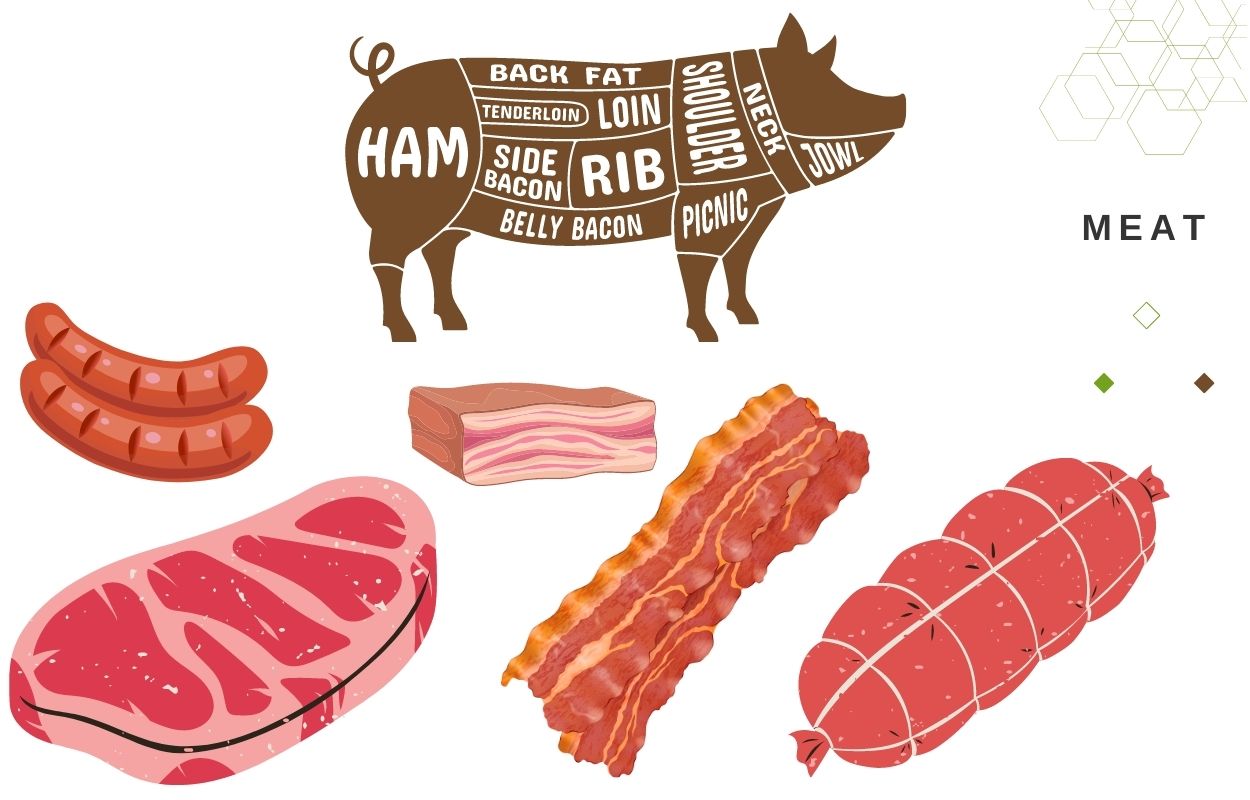
Still, even with low-fat content, this pig’s meat is well-textured, with good tenderness and a pleasing flavor.
The meat of this pig plays an important role in commercial pig meat production. Some common ways in which Hampshire pig meat is used include sausages, ham, bacon, simple pork chops for grilling or roasting, as well as ground pork and charcuterie.
Raising Hampshire Pig
Feeding
You can feed this pig with:
- Grains like oats, corn, barley, and wheat
- Fruit
- Nuts
- Dairy
- Vegetables
- Kitchen scraps as long as they are not too salty or contain lots of sugar.
- Fresh grass if left to graze and forage.
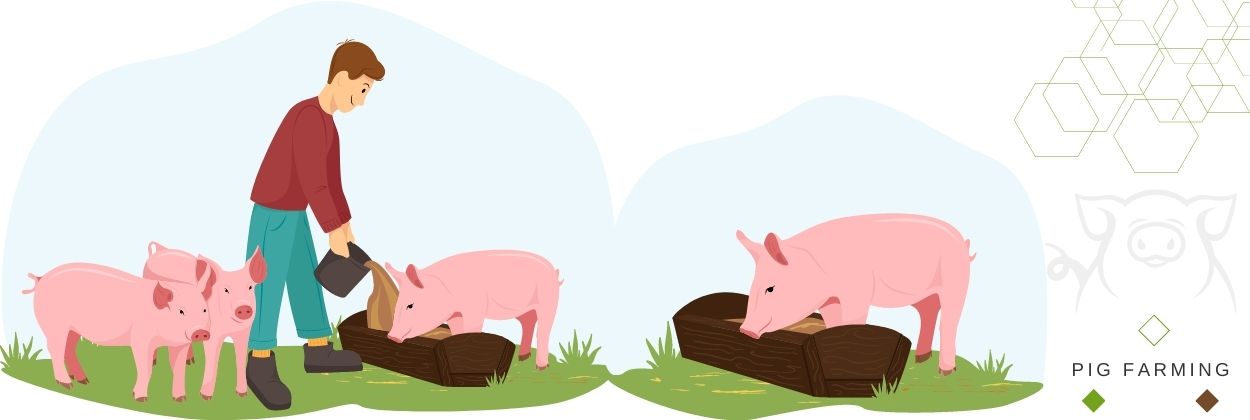
A Hampshire pig can eat an average of 4.4 to 6.5 lbs (2-3 kg) of food per day.
You also need a constant source of fresh water to keep the pigs hydrated at all times. To achieve this, you need to install a reliable water system for pigs that can provide water without making the area too wet or dirty.
Environment
A Hampshire pig can thrive in both outdoor and indoor environments.
In outdoor settings like pastures, it can engage in natural behaviors such as grazing and foraging, enjoying delicacies like fresh grass, plants, bugs, and worms.
In indoor environments like pens, it can do well as long as it has sufficient space to move freely.
Climate
This pig can do well in different climates because it is a very resilient pig breed. It can be raised in hot, humid, cold, wet, or dry climates as long as it has the right conditions.
In places with hot weather, it needs shade and mud to cool off. In cold areas, it needs shelter and straw bedding for warmth, while in dry regions it needs a lot of water to stay hydrated.
Shelter
Hampshire pigs require shelter to protect them from extreme weather conditions, including extreme heat or cold, rain, and wind.
A good shelter helps the pigs stay warm in cold seasons and provides shade during the summer. It also keeps them dry during rain or snow, reducing the risk of diseases, while offering a comfortable place for them to sleep and rest on clean and dry bedding.
These pigs need an electric fence to keep them within their designated area, as they have a tendency to explore their surroundings.
How many Hampshire pigs per acre?
You can raise 20 to 25 Hampshire pigs per acre.
This number depends on the quality and size of your pasture, the age of your pigs, as well as their diet.
If you also provide a substantial amount of supplemental feed in addition to grazing, then you can increase the stocking rate to up to 30 pigs per acre.
Breeding Hampshire pigs
You can breed these pigs through natural mating or artificial insemination, but due to their high prolificacy, most pig farmers opt for natural mating.
To begin, select a healthy sow or gilt along with a boar that exhibits desirable traits and introduce them for mating when the sow or gilt is in heat.
Although these pigs reach sexual maturity early, it’s recommended to wait until they are 10 to 12 months old to ensure the sow is sufficiently mature to carry a pregnancy.
First, monitor the sow for signs of the heat period. When you observe signs such as a swollen vulva, restlessness, or vaginal discharge, it’s time to introduce the boar. The sow’s heat period can last up to 3 days.
The gestation period is 113 days, equivalent to 3 months, 3 weeks, and 3 days.
Hampshire sows have litters of 12 to 15 piglets.
They exhibit excellent maternal skills and have no issues during farrowing. Sows can care for their piglets independently without the need for intervention.
With 12 teats spaced adequately apart, each piglet has sufficient space to feed themselves, and the sow produces an ample amount of milk to sustain the entire litter.
Your primary responsibility is to provide a suitable environment for the piglets’ development, ensuring proper heat management to maintain their optimal body temperature.
Vaccination
These pigs should be vaccinated against the most common pig diseases.
Staying up to date with their vaccinations is straightforward as long as you follow the standard pig vaccination schedule.
Hampshire pig health issues
Despite being hardy pigs with a strong ability to resist various diseases, Hampshire pigs can still be susceptible to respiratory issues caused by viruses and bacteria, skin problems, and infections from internal and external parasites.
Why should you raise Hampshire pigs?
Personal Use
For those looking to raise a substantial amount of meat in their own yard, the Hampshire pig can be a great choice due to its size.
As homesteaders, you won’t need to invest a significant amount of time in raising this type of pig. You simply need to ensure it has ample space, access to fresh grass, supplemental feed, and proper shelter.
The Hampshire pig boasts exceptional carcass quality and well-developed musculature, making it a great source of meat. You can use this meat for making homemade products or enjoy it through grilling, roasting, or in various delicious dishes.
Its lean meat can easily satisfy the needs of a large family.
Advantages and Disadvantages
| Advantages | Disadvantages |
|---|---|
| Lean meat | Boars could be aggressive sometimes |
| High meat yield | They need a bigger space due to their large size |
| Very prolific with litter size up to 15 | They need lots of water and supplemental feed increasing feeding costs |
| Fast growth rate | They require a larger shelter |
| Good mothering skills | Higher initial cost |
| Disease resistant breed |
History and Origins
The history of Hampshire pigs begins in southern Scotland and Northern England, where they were known as the “Old English Breed.” The population of these pigs was high in that area, as people and farmers were raising them due to their characteristics.
Between 1825 and 1835, this pig breed was imported from Hampshire County in England to America. This is how the pig got the name “Hampshire.”
Once they arrived in the United States, these pigs became known as McKay hogs, named after the man who imported them from England to America in Kentucky.
The first descendants of the imported pigs were later given a new name, “Thin Rind.” By 1893, farmers in Kentucky created the first association, named the American Thin Rind Association, which remained active until 1907.
Between 1922 and 1939, the pig received its final name, Hampshire, and the first Hampshire Registry was established. Since then, the Hampshire pig breed has become increasingly popular.


